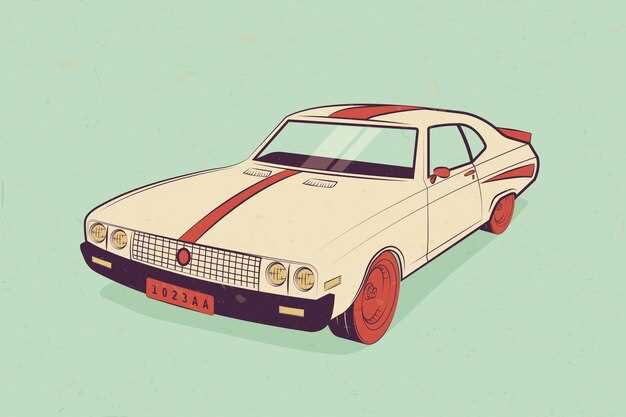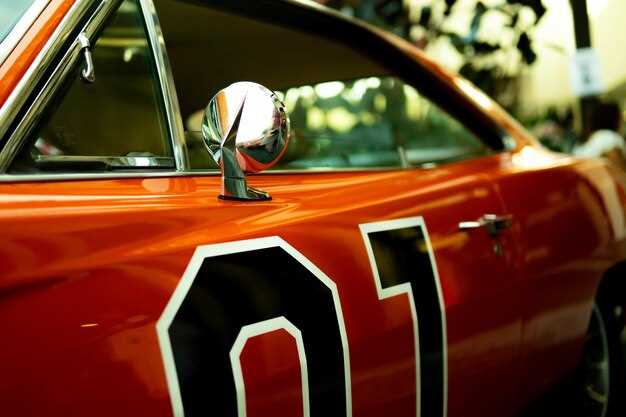
The 1970 Dodge Challenger stands as a hallmark in the realm of American muscle cars, representing the ultimate blend of power, style, and performance. With its aggressive stance and bold design, the Challenger captured the hearts of enthusiasts and collectors alike, solidifying its status as a legendary vehicle in automotive history.
As the era of muscle cars reached its zenith, the Dodge Challenger emerged with formidable engine options that catered to speed and adrenaline-seeking drivers. Its powerful V8 engines, including the iconic 426 Hemi, were engineered to deliver exhilarating performance, making the Challenger a dominant force on both the streets and the racetracks.
The 1970 model year introduced several design innovations, distinguishing it from its competitors. Featuring a long hood and a distinctive front grille, the Challenger not only boasted raw power under the hood but also a design aesthetic that turned heads. Its legacy continues to influence modern muscle cars, proving that the spirit of the muscle car era lives on through the enduring appeal of the Dodge Challenger.
1970 Dodge Challenger: The Iconic Muscle Car Legacy
The 1970 Dodge Challenger stands as a monumental symbol in the world of muscle cars. This vehicle not only represents a hallmark of American automotive design but also embodies the raw power and performance that enthusiasts crave. With its aggressive stance, long hood, and wide body, the Challenger exudes a sense of dominance on the road.
Under the hood, the Challenger offered an impressive range of engine options, including the legendary 426 HEMI V8, which set the standard for performance during its time. This powertrain allowed drivers to experience exhilarating acceleration, making it a favorite among racing enthusiasts and street performance fans alike.
In addition to its performance capabilities, the 1970 model introduced a variety of aesthetic options, from vibrant paint colors to distinctive striping. These features contributed to its appeal as a customizable and personal vehicle for many owners. The interior was designed with both comfort and sportiness in mind, ensuring that drivers enjoyed every moment behind the wheel.
The legacy of the 1970 Dodge Challenger continues to influence modern automotive design and performance. Its cult following and status as an icon in the muscle car community underscore its timeless allure. Collectors and enthusiasts strive to own this classic car, keeping its spirit alive and celebrating its place in automotive history.
Performance Features That Define the 1970 Dodge Challenger

The 1970 Dodge Challenger stands as an iconic representation of the muscle car era, embodying power, style, and performance. One of its standout features is the variety of engine options available, including the legendary 426 Hemi V8 and the 440 cubic inch V8. These engines offered exceptional horsepower and torque, allowing the Challenger to dominate the streets and racetracks alike.
The car was equipped with a robust three-speed TorqueFlite automatic transmission or optional four-speed manual transmission, providing drivers with seamless gear shifts and improved acceleration. The Challenger also featured a performance-tuned suspension system, which included heavy-duty front and rear sway bars and shock absorbers, enhancing its handling and stability during high-speed maneuvers.
Another defining performance feature of the 1970 Dodge Challenger was its lightweight design. The muscle car’s body was constructed using advanced materials for the time, contributing to a favorable power-to-weight ratio. This engineering consideration allowed for quicker acceleration and better overall performance on the road.
The Challenger also offered an optional dual exhaust system, which not only improved engine efficiency but also produced a deep, aggressive exhaust note that resonated with muscle car enthusiasts. Coupled with performance-oriented tires and rear-wheel drive, the 1970 Dodge Challenger delivered an exhilarating driving experience that made it a favorite among car enthusiasts.
In summary, the blend of powerful engine choices, advanced transmission options, refined suspension, and lightweight construction solidified the 1970 Dodge Challenger’s status as a quintessential muscle car, leaving a lasting legacy in automotive history.
Restoration Tips for 1970 Dodge Challenger Owners
Restoring a 1970 Dodge Challenger requires careful planning and attention to detail to preserve its iconic status as a classic muscle car. Begin with a thorough inspection of the vehicle to assess its condition. Check for rust, frame damage, and engine issues, as these aspects will dictate the restoration approach and budget.
Gather your tools and resources beforehand. A proper restoration may involve various disciplines, including mechanical, electrical, and bodywork. Invest in high-quality tools and, if needed, enlist the help of professionals for complicated tasks. Many chassis and engine components can be refurbished, so sourcing OEM or high-quality aftermarket parts is crucial for maintaining authenticity.
Document the entire process. Take notes and photos of each step to track progress and assist with reassembly. This will be beneficial if you plan to showcase the car at events or sell it in the future. Keeping records of original specifications can enhance the vehicle’s value.
Focus on preserving the original color scheme and features that make the Challenger unique. When it comes to painting, choose a reputable shop that specializes in classic car finishes. Use appropriate techniques and materials to ensure a quality finish that replicates the look of the original paint used in 1970.
During the restoration, engage with fellow Dodge enthusiasts or join local car clubs. They can provide valuable insights and recommendations based on their experiences. Community support can also be an excellent resource for finding rare parts and sharing restoration tips specific to the 1970 Dodge Challenger.
Finally, be patient and methodical throughout the restoration process. Quality takes time, and rushing can lead to mistakes that compromise the vehicle’s integrity. Embrace the journey, as restoring a classic muscle car like the 1970 Dodge Challenger is a rewarding labor of love that connects you to automotive history.
The Cultural Impact of the 1970 Dodge Challenger in the Automotive World

The 1970 Dodge Challenger is not just a car; it represents a significant chapter in the history of American automotive culture. Known for its powerful performance and bold design, the Challenger became an icon among muscle cars, influencing generations of car enthusiasts.
From its introduction, the Challenger captured attention with features that set it apart:
- Aggressive styling with a long hood and short rear deck.
- Variety of powerful engine options, including the legendary HEMI and 426 cu in V8.
- Customizable design options, allowing buyers to personalize their vehicles.
The influence of the 1970 Dodge Challenger extends beyond the roads. It sparked a cultural revolution in various aspects:
-
Media Representation: The Challenger has been prominently featured in films and television shows, such as “Vanishing Point” and “Dukes of Hazzard,” solidifying its status as a symbol of rebellion and freedom.
-
Car Enthusiast Community: The Challenger has fostered a strong fanbase, leading to clubs, meet-ups, and events centered around muscle cars. This community celebrates the car’s legacy through restoration projects and exhibitions.
-
Cultural Symbolism: The Dodge Challenger embodies the spirit of the American muscle car era, representing power, performance, and individuality. It has become a symbol of automotive excellence and freedom on the open road.
As the automotive world evolves, the 1970 Dodge Challenger continues to inspire new generations. Its legacy is celebrated in car shows, museums, and online forums, proving that this iconic muscle car has left an indelible mark on automotive culture.












